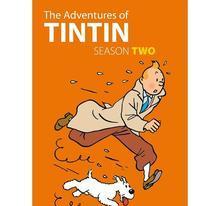
The Adventures of Tintin
On January 10, 1929, the Belgian painter Hergé's comic strip The Adventures of Tintin was serialized for the first time in newspapers.
Les Aventures de Tintin et Milou (French: Les Aventures de Tintin et Milou, old translation of Everyday Adventures) is a famous comic book series by the Belgian painter Hergé.
Hergé's Totor, CP des Hannetons, published in the magazine Le Boy-Scout belge, was the precursor to The Adventures of Tintin. The Adventures of Tintin, which has been serialized bi-weekly in Belgian newspapers since January 10, 1929 (more than 86 years ago), has attracted widespread interest from the optimistic and adventurous young journalist and his loyal dog, Snow White. The Adventures of Tintin has now been translated into 58 languages, including Chinese, and has sold more than 200 million copies.
In the early 1960s, French President Charles de Gaulle responded to a press conference asking a reporter, "What books are you keeping at the head of the bed at night?" to which de Gaulle replied "Tintin." This also gave a good publicity to The Adventures of Tintin.
In 2011, the live-action animated film The Adventures of Tintin, a collaboration between directors Steven Spielberg and Peter Jackson, caused a sensation during the premiere in the author's native Belgium. It was later awarded "Best Animated Film" at the 69th Golden Globe Awards. A sequel is in the works.
The story was inspired by the travels of Danish writer and actor Paler Halder, who traveled the world in 44 days at the age of 15.
Tintin's comic book story is based on adventure, supplemented by science fantasy content, humorous content, while advocating anti-war, peace and humanitarian ideas, and is very famous in Western countries. But due to the limitations of the author's time, there are scenes of racism and animal hunting in his early works that are controversial today. Black Isle was redrawn in the 1960s. Under hergé's authorization, france produced two films in the 1960s, Tintin and the Golden Fleece, which were independent of comics, and Tintin and the Blue Orange, which were published in a collection. Studio Hergé wrote Tintin in Shark Lake in the 1970s. After Hergé's death, according to his last wishes, the Tintin series no longer created follow-up comics.
Although the story of Tintin has become a century-old, it still has considerable fans and memories today, and its series of comics is still being reprinted in Europe.
The animated version, which aired back in 1991, was co-produced by french company Ellipes Programmé and Canadian company Nelvana Limited.
Overseas, AVIS International broadcast the English version in 1995, initially on Friday nights with Chinese subtitles, but later rebroadcasts during the day without Chinese subtitles, and the Cantonese dubbed version was postponed until November 13, 2011.
Chinese mainland was not broadcast by CCTV-6 until 2004, while Taiwan was broadcast in Taiwan in the same year at the opening of a pilot broadcast on Weilai Children's Television (now renamed Momo Parent-Child Television), and was repeated several times over the past two years (and was not rebroadcast since due to the loss of the channel's combined broadcast rights).